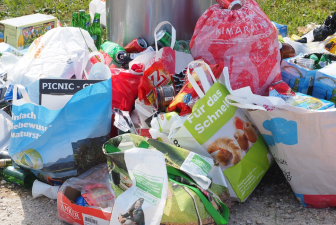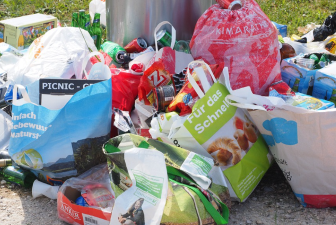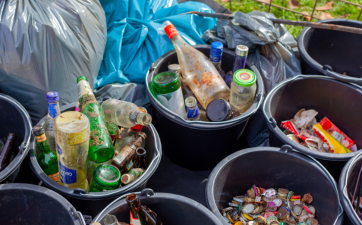
On February 11, 2025, the EU Packaging and Packaging Waste Regulation (PPWR) officially came into effect, replacing the nearly 30-year-old Directive (94/62/EC).
This regulation not only imposes revolutionary requirements on packaging design, material use, and recycling standards, but also promotes the transformation of global supply chains towards sustainable development through two core mechanisms: Extended Producer Responsibility (EPR) and circular economy policy coordination. This article will focus on analyzing the regulation's core measures and policy coordination pathways, providing guidance for cross-border businesses.
What is PPWR?
PPWR is a draft regulation proposed by the European Commission. It aims to reduce packaging waste, promote a circular economy, and mitigate environmental impacts through strict packaging standards and waste management measures. PPWR is a comprehensive reform of the existing 1994 Packaging and Packaging Waste Directive (PPWD, Directive 94/62/EC). It emphasizes uniform application and enforceability of the law, ensuring that EU member states adhere to the same rules rather than implementing separate directives.

Background of the PPWR
- Environmental Pressures: The EU generates approximately 84 million tons of packaging waste annually, or 188 kg per capita, of which only 38% is effectively recycled.
- Plastic Pollution Challenge: Food packaging accounts for 40% of plastic use in the EU, yet the recycling rate for plastic packaging is less than 17%.
- Outdated Regulations: The 1994 PPWR (94/62/EC) relied on voluntary emission reductions, leading to widespread excessive packaging. A 2022 EU assessment showed that packaging weight increased by 20% compared to 2010, far exceeding GDP growth.
Legislative Background
Resource Consumption and Waste Challenges:
- Statistics show that 40% of plastic and 50% of paper in the EU are used for packaging, and packaging waste accounts for 36% of municipal solid waste. However, the continued growth in packaging waste generation and low reuse and recycling rates seriously hinder the achievement of low-carbon circular economy goals.
Regulatory Fragmentation:
- Fragmented rules and ambiguous requirements across member states lead to market uncertainty, increase business costs, and hinder the free flow of goods in the internal market. Circular Economy Goals:
- Under the European Green Deal and the New Circular Economy Action Plan, the EU has pledged to make all packaging reusable or recyclable by 2030, reduce excessive packaging, and promote design optimization and the use of recycled materials.
Plastic Pollution Control:
- Plastic has the highest carbon footprint, yet its recycling rate is extremely low. The regulation emphasizes increasing the proportion of recycled plastics and restricting the use of hazardous chemicals (such as PFAS and bisphenol A) to reduce harm to the environment and health.
International Commitments:
- The regulation echoes international agreements such as the Basel Convention and the London Convention, strengthening cross-border management of plastic waste and promoting global plastic pollution control.

Legislative Significance:
- Promoting the Circular Economy:
Through full lifecycle management requirements (including design, recycling, and the use of recycled materials), it reduces reliance on virgin resources and improves resource efficiency.
- Harmonizing Market Rules:
Coordinating member state measures, eliminating internal market barriers, providing businesses with clear and consistent standards, and reducing compliance costs.
- Environmental and Health Protection:
Restricting the use of hazardous substances (such as heavy metals and PFAS) in packaging, reducing the risk of microplastic contamination, and ensuring the safety of food contact materials. Enhanced Consumer Rights:
Mandatory labeling (e.g., material composition and recyclability markings) enhances transparency, helps consumers correctly sort waste, and reduces environmental pollution.
- Incentives for Innovation:
Technological innovations such as compostable packaging and bio-based materials are supported, while transitional exemptions are provided to balance environmental goals with the needs of industrial development.
The entry into force of this regulation marks a significant step forward for sustainable packaging in the EU and provides a systematic solution to the global packaging waste problem.
